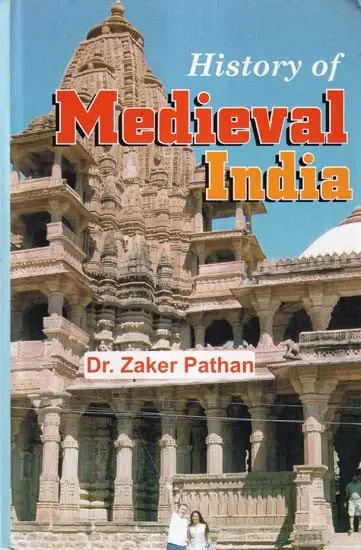About the Book
Many historians, Indian and British, have tended to look at South Asian history from the point of view of the north, and defined the medieval period mainly in terms of the Muslim conquests and Islamic institutions. These did not play a major role, however, until the 13th century. During this period, Mughal India was the second largest economy in the world. The gross domestic product of India in the 16th century was estimated at about 24.5% of the world economy, in comparison to Ming China's 25% share. During this period, Mughals were replaced by the Nawabs in north India, the Marathas in central India and the Nizams in south India. However, the Mughal tax administration system was left largely intact. China was the world's largest economy followed by India and France. The gross domestic product of India in 1750 was estimated at about 80 percent that of China. The British colonial rule created an institutional environment that did stabilize the law and order situation to a large extent. The British foreign policies however stifled the trade with rest of the world. This book should be useful to the students and teachers of medieval Indian history.
About The Author
Dr. Zaker Pathan is presently working as Head, Department of History, Arts Science and Commerce College Badnapur, Distt. Jalna Maharashtra. Dr. Pathan is a research guide in History. He has guided four Doctoral and seven M.Phil, students to successful award of their degree. He is also contributing editor of Binifo International Publication and New Voices Publication. He has chaired many conferences, seminars and workshop as subject expert, at the national and international level. More than 30 of his referred articles have been published in English and Marathi.
Preface
Religion, especially Hinduism, played an influential role in shaping economic activities. The Indian caste system castes and sub-castes functioned much like medieval European guilds, ensuring division of labour and provided for training of apprentices. The caste system restricted people from changing one's occupation and aspiring to an upper caste's lifestyle. Thus, a barber could not become a goldsmith and even a highly skilled carpenter could not aspire to the lifestyle or privileges enjoyed by a Kshatriya (person of a warrior class). This barrier to mobility on labour restricted economic prosperity to a few castes. Pilgrimage towns like Allahabad, Benares, Nasik and Puri, mostly centred around rivers, developed into centres of trade and commerce. Religious functions, festivals and the practice of taking a pilgrimage resulted in a flourishing pilgrimage economy.
Introduction
Many historians, Indian and British, have tended to look at South Asian history from the point of view of the north, and defined the medieval period mainly in terms of the Muslim conquests and Islamic institutions. These did not play a major role, however, until the 13th century. Until the last 25 years, those that bothered to talk about the previous seven hundred years between the fall of the Gupta Emperors and 1200 A.D. saw these centuries as a sort of preparation for the Islamic governments which followed. So these years ars of the early medieval period have been characterized as witnessing the degradation of the culture of the classical Gupta period and its political order. This northern- centered view dismisses the parts of the subcontinent in the south where Islamic states never established stable governments. But this view was oriented in the end more toward justifying or condemning British Rule than it was in exploring the actual historical experience of South Asia between 500 A.D. and 1200 A.D.

